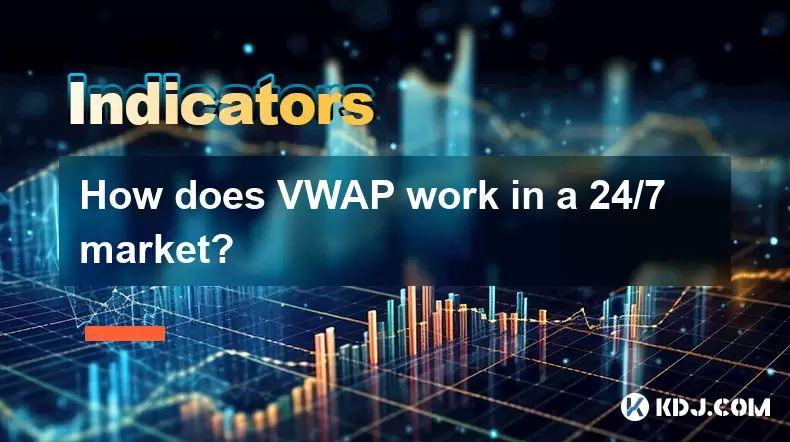-
 Bitcoin
Bitcoin $118100
0.44% -
 Ethereum
Ethereum $3765
5.84% -
 XRP
XRP $3.498
3.12% -
 Tether USDt
Tether USDt $1.000
0.00% -
 BNB
BNB $753.2
3.41% -
 Solana
Solana $181.7
3.58% -
 USDC
USDC $0.9999
0.01% -
 Dogecoin
Dogecoin $0.2704
12.75% -
 Cardano
Cardano $0.8684
5.85% -
 TRON
TRON $0.3151
-0.86% -
 Hyperliquid
Hyperliquid $46.06
4.51% -
 Stellar
Stellar $0.4695
2.48% -
 Sui
Sui $3.910
3.18% -
 Chainlink
Chainlink $19.36
6.65% -
 Hedera
Hedera $0.2750
3.99% -
 Bitcoin Cash
Bitcoin Cash $544.6
6.31% -
 Avalanche
Avalanche $25.12
3.69% -
 Shiba Inu
Shiba Inu $0.00001559
5.40% -
 Litecoin
Litecoin $116.8
5.10% -
 UNUS SED LEO
UNUS SED LEO $8.991
0.05% -
 Toncoin
Toncoin $3.283
2.79% -
 Polkadot
Polkadot $4.509
3.97% -
 Uniswap
Uniswap $10.67
6.58% -
 Ethena USDe
Ethena USDe $1.001
-0.01% -
 Monero
Monero $323.2
0.48% -
 Pepe
Pepe $0.00001410
6.37% -
 Bitget Token
Bitget Token $4.964
1.93% -
 Dai
Dai $0.9998
-0.01% -
 Aave
Aave $326.2
3.85% -
 Bittensor
Bittensor $421.8
2.46%
How does VWAP work in a 24/7 market?
VWAP helps crypto traders gauge average price trends in 24/7 markets, guiding entry and exit points based on volume-weighted data.
Jul 17, 2025 at 04:28 am

Understanding VWAP in Continuous Trading Environments
VWAP, or Volume Weighted Average Price, is a trading benchmark used especially in traditional financial markets to determine the average price of an asset based on both volume and price. However, when applied to a 24/7 cryptocurrency market, certain adjustments and considerations must be taken into account. Unlike traditional stock exchanges that operate during fixed hours, crypto markets never close, which affects how VWAP is calculated and interpreted.
In a continuous market, traders often set their own timeframes for calculating VWAP, such as using a 24-hour rolling window instead of a single trading session. This allows for consistent analysis despite the non-stop nature of digital asset trading. It’s crucial to understand that while the formula remains the same — (Price × Volume) ÷ Total Volume — the dynamic nature of crypto trading demands flexibility in implementation.
How Is VWAP Calculated in Crypto?
To compute VWAP in cryptocurrency, you begin by selecting a specific time interval. Although there's no official closing bell, many traders use 1-minute or 5-minute intervals to gather data points throughout the day. Here's how it works:
- For each interval, multiply the closing price of the candlestick by the volume traded during that period.
- Sum all these values over your chosen timeframe (e.g., 24 hours).
- Divide the total sum by the cumulative volume over the same timeframe.
This process yields a single VWAP line that reflects the true average price weighted by volume. In crypto, this can help traders identify whether the current price is above or below the average cost basis of the majority of participants.
Why VWAP Matters in Round-the-Clock Trading
The 24/7 nature of crypto markets introduces volatility and irregular volume distribution across different time zones. For example, Bitcoin might see higher volume during Asian trading hours, then taper off at night in Europe. VWAP helps smooth out these fluctuations by giving more weight to periods with higher liquidity.
Traders use VWAP as a reference point to assess momentum and potential entry or exit levels. If the price consistently stays above VWAP, it could indicate a bullish trend, while prices below VWAP may signal bearish sentiment. Since crypto assets trade constantly, real-time monitoring of VWAP becomes essential for making informed decisions.
Implementing VWAP on Cryptocurrency Charts
Most modern trading platforms like TradingView, Binance, or Bybit, offer built-in VWAP indicators that automatically calculate and plot the value on charts. To apply VWAP effectively in crypto:
- Choose a suitable chart timeframe (e.g., 1-hour or 4-hour candles).
- Enable the VWAP indicator from the platform’s list of tools.
- Customize the calculation period if needed (some traders use multi-day windows for long-term trends).
- Overlay VWAP with other indicators like moving averages or RSI to confirm signals.
It’s also possible to manually calculate VWAP using historical data exported from exchanges. Traders who build custom dashboards or bots often do this to integrate VWAP logic into their algorithmic strategies.
Challenges of Using VWAP in Crypto Markets
Despite its usefulness, VWAP comes with limitations in the context of non-stop crypto trading:
- Timeframe dependency: The accuracy of VWAP heavily depends on the selected period. A short window may be too reactive, while a long one may lag behind current price action.
- Whale manipulation: Large trades executed by institutional players or whales can distort the VWAP, especially on smaller-cap altcoins.
- Data inconsistency: Not all exchanges provide uniform tick data, which can affect VWAP precision when comparing across platforms.
These challenges require traders to remain cautious and cross-validate VWAP signals with other metrics before making decisions.
Integrating VWAP into Trading Strategies
Many traders incorporate VWAP into their intraday or swing trading strategies in crypto. One popular approach involves watching for price crossovers:
- When the price moves above VWAP, it may suggest strength and a potential long opportunity.
- Conversely, a drop below VWAP might signal weakness and prompt short entries.
Some advanced strategies combine VWAP with trendlines or Fibonacci retracements to enhance accuracy. Others use multiple VWAP lines with varying timeframes to spot divergences and confirm trends.
Another method is mean reversion, where traders expect the price to return to the VWAP after a sharp move away from it. This works best in sideways or consolidating markets.
Frequently Asked Questions
Q: Can I use VWAP for scalping in crypto?
Yes, VWAP can be effective for scalping if used with tight timeframes (like 1-minute or 5-minute charts). Scalpers often look for quick price deviations from VWAP to enter and exit trades rapidly.
Q: How does VWAP differ from a simple moving average (SMA)?
While both are used to track price trends, VWAP gives more weight to high-volume periods, whereas SMA treats all periods equally regardless of volume. This makes VWAP more reflective of actual buying and selling pressure.
Q: Does VWAP reset every day in crypto trading?
No, unlike in traditional markets, VWAP doesn’t reset daily in crypto unless configured to do so. Traders can choose to reset it manually or let it run continuously depending on their strategy.
Q: Is VWAP reliable on decentralized exchanges (DEXs)?
Accuracy can vary due to lower liquidity and inconsistent data feeds on DEXs. It’s advisable to verify VWAP calculations using aggregated data sources or centralized exchange equivalents for better reliability.
Disclaimer:info@kdj.com
The information provided is not trading advice. kdj.com does not assume any responsibility for any investments made based on the information provided in this article. Cryptocurrencies are highly volatile and it is highly recommended that you invest with caution after thorough research!
If you believe that the content used on this website infringes your copyright, please contact us immediately (info@kdj.com) and we will delete it promptly.
- Cardano (ADA) Price Surges Amid Bitcoin ATH Buzz: What's Next?
- 2025-07-21 12:30:11
- Bitcoin, UK, and Sale: Decoding the Crypto Buzz in Britain
- 2025-07-21 12:30:11
- NFT Performers in Flux: Pudgy Penguins, Courtyard, and the Shifting Sands of the Market
- 2025-07-21 10:30:12
- Decoding HKMA's Stablecoin Licensing System: A New Era for Digital Assets?
- 2025-07-21 10:50:11
- Address, CryptoPunks, NFTs: What's the Buzz?
- 2025-07-21 10:50:11
- Ethereum, Crypto, and Market Moves: What's the Deal?
- 2025-07-21 11:30:11
Related knowledge

Advanced RSI strategies for crypto
Jul 13,2025 at 11:01am
Understanding the Basics of RSI in Cryptocurrency TradingThe Relative Strength Index (RSI) is a momentum oscillator used to measure the speed and chan...

Crypto RSI for day trading
Jul 12,2025 at 11:14am
Understanding RSI in the Context of Cryptocurrency TradingThe Relative Strength Index (RSI) is a momentum oscillator used to measure the speed and cha...

Crypto RSI for scalping
Jul 12,2025 at 11:00pm
Understanding RSI in the Context of Crypto TradingThe Relative Strength Index (RSI) is a momentum oscillator widely used by traders to measure the spe...

What does an RSI of 30 mean in crypto
Jul 15,2025 at 07:07pm
Understanding RSI in Cryptocurrency TradingRelative Strength Index (RSI) is a momentum oscillator widely used in cryptocurrency trading to measure the...

What does an RSI of 70 mean in crypto
Jul 13,2025 at 06:07pm
Understanding the RSI Indicator in Cryptocurrency TradingThe Relative Strength Index (RSI) is a widely used technical analysis tool that helps traders...

Does RSI work in a bear market for crypto
Jul 16,2025 at 01:36pm
Understanding RSI in Cryptocurrency TradingThe Relative Strength Index (RSI) is a momentum oscillator used by traders to measure the speed and change ...

Advanced RSI strategies for crypto
Jul 13,2025 at 11:01am
Understanding the Basics of RSI in Cryptocurrency TradingThe Relative Strength Index (RSI) is a momentum oscillator used to measure the speed and chan...

Crypto RSI for day trading
Jul 12,2025 at 11:14am
Understanding RSI in the Context of Cryptocurrency TradingThe Relative Strength Index (RSI) is a momentum oscillator used to measure the speed and cha...

Crypto RSI for scalping
Jul 12,2025 at 11:00pm
Understanding RSI in the Context of Crypto TradingThe Relative Strength Index (RSI) is a momentum oscillator widely used by traders to measure the spe...

What does an RSI of 30 mean in crypto
Jul 15,2025 at 07:07pm
Understanding RSI in Cryptocurrency TradingRelative Strength Index (RSI) is a momentum oscillator widely used in cryptocurrency trading to measure the...

What does an RSI of 70 mean in crypto
Jul 13,2025 at 06:07pm
Understanding the RSI Indicator in Cryptocurrency TradingThe Relative Strength Index (RSI) is a widely used technical analysis tool that helps traders...

Does RSI work in a bear market for crypto
Jul 16,2025 at 01:36pm
Understanding RSI in Cryptocurrency TradingThe Relative Strength Index (RSI) is a momentum oscillator used by traders to measure the speed and change ...
See all articles

























































































